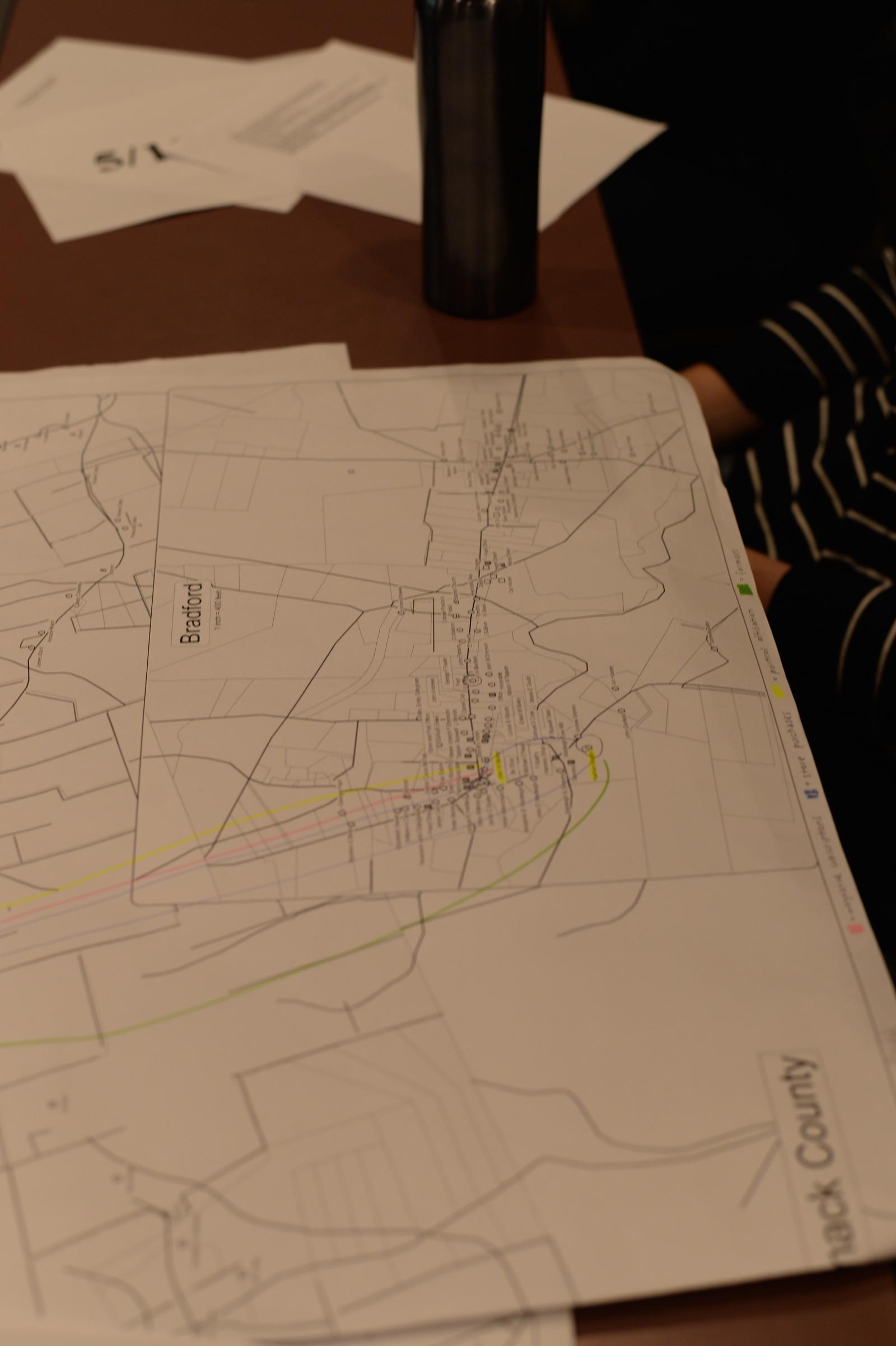Unlike any other societal advancement, social media has changed the way people connect, relate and share interests. Yet, prior to the advent of social media sites like Facebook and Twitter, community gathering spots, known as “third places,” were considered the hubs for social networking. This semester, about 100 undergraduate students from Professor Michele Lamprakos’ historic preservation course, HISP 200: The Everyday and the American Environment, constructed a 19th-century social network for the small town of Bradford, New Hampshire, by examining daily activity surrounding the town’s third place, the Carr Store. Swapping social media for bricks and documentation, the exercise explored how, historically, the built environment and social relationships shaped and influenced the everyday American experience.
To understand the project means first understanding the significance of the Carr Store. Established in 1824 by Daniel Carr, the Carr Store was the commercial epicenter of Bradford, a main street fixture that served as a procurer of goods, a center of finance, and a post office. The town’s setting—as the last stop on the railroad line—meant the Carr Store also acted as a distribution center for goods made and grown in the area for locations in the south, including Boston. That same railroad meant that, if Daniel Carr and, later, his son William A. Carr and grandson William M. Carr didn’t carry it, they could get it easily for people in and around Bradford. But it’s the meticulous record books kept by the Carrs that allow students to trace the social underpinnings of the town. Each customer was assigned an account number, a common practice in those days. A separate ledger lists items purchased or ordered daily by customer and account number. Another list shows newspaper and magazine subscription records. These extensive ledgers, combined with census records, genealogies, correspondence and other documents, provided the data from which students began connecting the social dots.
“The Carr Store was central to daily life in Bradford during that time, because it served so many roles for the town,” explains Historic Preservation Director Dr. Don Linebaugh, who has been researching the Carr Store for nearly three decades. “Naturally, the store lends itself to identifying social interactions and connections, and the documents we’ve found provide clues to construct the town’s social, economic and political history.”
By focusing on five specific days—four in 1859 and one in 1858—the students could see who came to the store and at what times, what they bought, and who else was in the store at that time. Mail and store correspondence provided clues to the social circles of the town; magazine subscriptions, for example, pointed to political affiliations, membership in religious and fraternal organizations, and even hobbies. Notes to Carr from customers also shed light on potential relationships—such as a request to purchase the same coffee brand as someone across town—and milestone events, like a request for black silk fabric for a funeral dress. Students met last week to plot these connections on a physical map, which helped them discover and visualize patterns and social links.
“This collaboration brought Don’s rich trove of historical data into the classroom, allowing students to work with it,” says Dr. Lamprakos. “I think it brought the themes of the course home, while exposing students to the kinds of research methods we employ as historians. I see it as a pilot for a course or extended workshop that applies the methods of the digital humanities to cultural landscapes.”
While the exercise provided an entertaining perspective of social exchanges before digital—to a generation who has never known life in analog—it also taught students how to sift through primary source documents to garner information, a fundamental research skill for humanities-based disciplines.
“Ultimately, we wanted the students to understand how historians know what they know and the work that goes into telling these stories,” said James Hull, a historic preservation and planning graduate student who assisted in the class.
The project results will also be added to Don’s continued research of the Carr Store and mapping the social spokes surrounding third-place hubs; because of the abundance of raw documentation available for Bradford, it is also the ideal test site for research initiatives that capitalize on wikis and crowd-sourcing, where amateur researchers can pour through data to make connections of their own.
“The Carr Store project is a great example of leveraging the material landscape and the artifacts of everyday behavior to better understand and explore the social entanglements of the 19th century,” said Linebaugh. “It’s a research strategy that will help us understand and preserve our social history.”


